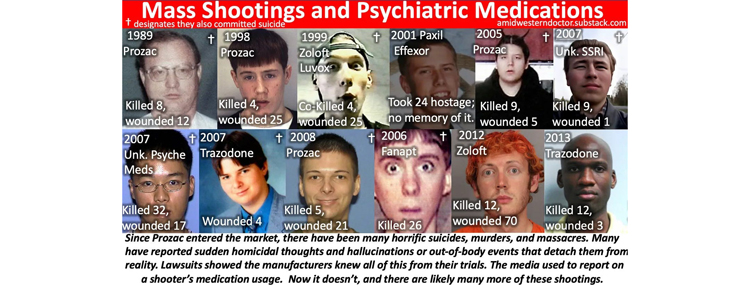by Carl Nelson (May 2024)

The internet sometimes is like a hallucinogenic drug. I take one tab with my coffee in the morning, and by mid-day I’ve followed innumerable links to end up God-Knows-Where.
 One of my initial rituals of the day is to cue on the YouTube music videos to select my mix of tunes for the morning’s play, as I thumb through the e mails and Facebook posts. And one thing, which will pull me off-task, is to follow up on a favorite song that I haven’t heard in years. What is the artist doing now? How did that song ever come to be written? Correlations and/or their lack, abound. Inspiration can be quizzical. For example, Bob Dylan wrote “When the Ship Comes In,” when in a pique for being refused a hotel room. While, that lovely song, “When You Say Nothing At All,” was remarked as being the product of just another fairly successful day of song writing by some Nashville tunesmiths and left with the pile to be pitched later. One of my favorite sad songs, “The Dealer/Down and Losing,” as sung by Judy Collins, was penned by a guy out of Canada who had a program there on the TV. His day job was to drill on teeth, and he performed as The Singing Dentist.
One of my initial rituals of the day is to cue on the YouTube music videos to select my mix of tunes for the morning’s play, as I thumb through the e mails and Facebook posts. And one thing, which will pull me off-task, is to follow up on a favorite song that I haven’t heard in years. What is the artist doing now? How did that song ever come to be written? Correlations and/or their lack, abound. Inspiration can be quizzical. For example, Bob Dylan wrote “When the Ship Comes In,” when in a pique for being refused a hotel room. While, that lovely song, “When You Say Nothing At All,” was remarked as being the product of just another fairly successful day of song writing by some Nashville tunesmiths and left with the pile to be pitched later. One of my favorite sad songs, “The Dealer/Down and Losing,” as sung by Judy Collins, was penned by a guy out of Canada who had a program there on the TV. His day job was to drill on teeth, and he performed as The Singing Dentist.
The other day, “Runaway” by the 60s singer Del Shannon lit up my ears. I wondered whatever happened to him.
Apparently, his life had proceeded on fairly successfully. He had a family and further musical career. However:
In January 1990 Shannon was pushing himself to finish a new album and schedule upcoming concerts, resulting in troublesome stress. On the advice of his doctor, on January 24, Shannon began taking Prozac, an antidepressant. Fifteen days later, he died by suicide, shooting himself with a .22 caliber rifle at his home in Santa Clarita, California, on February 8, 1990. “He was very much in charge of his business, but within days after he started taking Prozac I noticed a personality change in him. He developed severe insomnia, extreme fatigue, chills, racing heart, dry mouth, and upset stomach,” testified LeAnne Westover, Shannon’s widow. “Suicide was totally out of character for my husband. There was no note and no goodbye. —Wikipedia
A Facebook friend, who was personally acquainted with the matter, posted to me: “He was getting ready to tour with Tom Petty. Really in good spirits. Lovely wife—they were really close. She left for a few minute to get groceries and when she came back he was dead.”
Recently SSRIs (Selective Serotonin Reuptake Inhibitors) have been in the (alternate) news recently for both failing to act as they have been described to function, and also for being correlated with very serious side-effects such as suicide and violence. Prozac is one such SSRI.
Even more alarming is the high correlation recently being written about between mass shootings and the evidence of the shooters being either on prescribed SSRIs at the time, or just coming off of them. When we realize that mass shooters haven’t memberships in the NRA, but have been gobbling these pills consistently—perhaps we should be focusing our efforts somewhere other than at rebutting the 2nd Amendment.

I have had my own experience with these medications.
Seventeen years ago I started taking Venlafaxin (Effexor) for anxiety related insomnia. Those of us who have or now suffer from insomnia know what a frustrating affliction it is. No matter how you plan or organize your life, insomnia will make your experience of it a tired and grumpy trial. And when it’s considered how many times a person might have killed or injured themselves by being unaware (such as being asleep at the wheel) —insomnia is downright dangerous.
After trying umpteen ways of curing myself, my wife finally talked me into getting the prescription of Venlafaxin from my doctor. It worked like a charm. My insomnia disappeared. Along with this, I also benefitted from a measure of calm inserted between myself and the world’s fractious intrusions. It was as if my psyche were wearing a quarter inch insulating foam wet suit. I might be poked and provoked, but I didn’t react impulsively.
I was sold.
I figured that I was constitutionally configured so as to naturally suffer a higher level of anxiety than most, and that to operate happily, I was just going to have to face being (a bit) chemically dependent.
Then, within the past six months I began reading in my Covid-19 related substacks of the newer revelations regarding SSRIs. This was concerning. Then, I read the book, “Why We Sleep” by Matthew Walker, PhD. In it the author related his bouts of insomnia, which lasted several months—but he described them as episodes. What, I imagined, if my insomnia were only an episode, and I had not needed to take this medication—for 17 years?
I needed to find out.
I had read that it was inadvisable to go off SSRIs cold-turkey. That your brain reconfigured itself under their influence and that it would take some time for your brain to reconfigure itself back (like 6 weeks or more). It was safest to reduce the dosage gradually.
This seemed reasonable. However, I was very interested in discovering exactly how much of my nature were my real self and how much was chemical. And to get a good feeling for this, I figured, I needed a clean break. I needed to step off the mental shelf, leave the mental stilts.
Whew! You wouldn’t have wanted to be around me—or failing that, you might have stepped back. For several weeks, especially initially, I was like this cat video I found on the internet. In it, the owner wanted to keep his cat off the kitchen counter. He found that if he placed tin foil across the counter, the crinkling sound the cat produced when it lept up onto the counter would freak the cat out so much it virtually flung itself off. This was hysterically funny. It appeared as if the cat were literally catapulted far into the air, and tossed many feet from the counter.
And that electrical, crinkly, aluminum foil sound was exactly how my mind seemed during that time. And I had a rather like reaction to near every intrusion. I awoke one morning to warn my wife: “Don’t Say. One. Word!” And went off to sit alone with my coffee.
(I wrote about this experience in a previous article: “Coming Down, Then Back Up”)
Once off Venlafaxine, the dreaded insomnia did not reappear. I slept consistently as before. So I went off that stuff for good.
Forward a few months; I’m doing well. My irritability is way down, nearly back to normal. (I have a long, impatient pause naturally, and then a very quick zero to sixty.) But what caught me by surprise one day, months later, was a sudden very powerful urge to kill myself.
What was so strange about the urge was that it seemed like an implant, like a just-remembered task that I’d failed to honor, that I felt it important to finish. I would characterize the message as much like the black, mysterious, oblong monolith of the movie “2001” (only in my mind it was rather white, like a tooth). In my mind’s eye I sat, rather like those apes in the movie, dumbfounded in awe of this artifact beaming me this urge—which felt in me but not of me.
Most of us have had fantasies about killing ourselves, which are simply something which comes with existence – kind of like athlete’s foot will appear with age. This normal, to-be-expected situation is rather like the opposite of a neurosis, which is said to be “doing the same thing over and over, while expecting a different outcome.” Normal life, to the contrary, when it fails to succeed, is often a matter of doing every conceivable thing different, but achieving the same outcome. This is where suicidal fantasies can enter—often after all the wear and tear. One mulls the matter over, again and again, to generally reach the same conclusion—that the reason is because we’re just who we are, and that’s not going to change.
For those of us left alive, we decide to solve this problem of the human condition by not making it a problem. We finally find some humility—just forget it—and move along. Recalibrate the aspirations. Life is a half-full glass. Problem assuaged.
But this suicidal annunciation was not like that at all. I was upset about one or two things at the time, but neither were particularly novel nor catastrophic. As I’ve noted, it seemed an artificial artifact, much like that monolith out of “2001,” without much relation to any other thought in my brain—or even feeling quite human, but rather like a technical direction.
It was like a messenger came into to my head … to deliver these instructions.
So, this is my theory about Del Shannon’s demise. My guess is that he was not enjoying the side effects of Prozac, and so decided to discontinue the medication. He immediately felt much better. And that next day or so, after his wife had left briefly to get something at the store—the messenger came. He apparently had a gun handy.
I don’t own a gun. And, luckily it would seem, I am extremely sluggish to act. It is very hard to get me to move and ‘do’ anything. In order to act at all, I have to go to a lot of effort to create a habit, which is my closest approximation to moving, where it feels like your aren’t doing anything, because nothing is different. Then, it seems I can act before fully realizing it. And now, in retrospect, it seems my affliction has its upside.
At Camden pool I know this fellow who swims very fast. I call him Rabbit while he calls me Turtle. Today I caught him out of breath at the end of his lane. “Hi, Rabbit,” I greeted him.
“I swim very fast so that it’s over sooner,” he averred.
I replied, “I swim very slow so that it doesn’t seem to be happening at all.”
I think we are finding common ground.
My mysterious, monolith messenger of impending doom appears to have gotten tired, or bored, or impatient—and just gone away … or dissolved into a better neural architecture.
I’m not sure what.
But, here I am.
Table of Contents
Carl Nelson has recently finished a book of poetry titled, Self-Assembly, which will be published shortly, and from which the above poetry has been selected. To see this and more of his work, please visit Magic Bean Books.
Follow NER on Twitter @NERIconoclast
- Like
- Digg
- Tumblr
- VKontakte
- Buffer
- Love This
- Odnoklassniki
- Meneame
- Blogger
- Amazon
- Yahoo Mail
- Gmail
- AOL
- Newsvine
- HackerNews
- Evernote
- MySpace
- Mail.ru
- Viadeo
- Line
- Comments
- SMS
- Viber
- Telegram
- Subscribe
- Facebook Messenger
- Kakao
- LiveJournal
- Yammer
- Edgar
- Fintel
- Mix
- Instapaper
- Copy Link








5 Responses
Whenever I have periods of insomnia, I find that taking melotonin for 3-4 days not only puts me to sleep for those days, but my sleep pattern goes back to normal.
FYI.
A scary story with a happy end — though not for Del Shannon…
As the arrow of time draws near to its final mark, evil spirits that roam the earth will find more in the human world who are willing to accommodate their enticements. The spirits know more about being human that we can ever know in our present state. They play us like fiddles. They smirk at our gullibility. I’m glad you didn’t take the bait and off yourself, Mr. Nelson. It would be a shame if you did. You add a lot to the human conversation.
In case you’re interested, here’s the Book of Enoch:
https://www.ccel.org/c/charles/otpseudepig/enoch/ENOCH_1.HTM
For insight on the troubles that have afflicted us since the days of Eve & Adam, scroll down to Chapters 12 thru 16. Rebellion, apostasy, adultery, fornication and sodomy have been the rule, not the exception since Satan seduced Eve and debauched Adam. Nothing ‘just happens.’ Keep on rockin.
P.S. I woulda paid money, hard money, to see Del Shannon and Tom Petty onstage together. I can imagine the harmony of their voices.
Thanks, John.
Fascinating story and frightening in how it suggests the demonic is not far away. And all the more so when it surfaces in someone like Del Shannon known for such wonderful, life-affirming music.